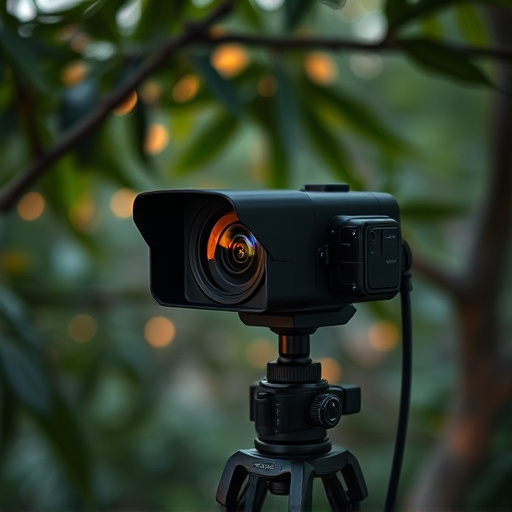Wireless hidden cameras in apartments transmit signals via Wi-Fi, Bluetooth, or RF networks. Detecting them involves monitoring network activity, energy consumption, and using tools to identify unusual signals. Understanding operational frequencies, inspecting areas near windows/doors, scanning for unfamiliar devices, and noting strange noises/lights aid in detection. Advanced technologies like thermal imaging, RF detectors, real-time network monitoring software, physical inspections, and magnetic field detectors enhance security. Balancing effectiveness with legal and ethical considerations is crucial when using these cameras to avoid legal issues and respect privacy boundaries.
Uncover the secrets behind wireless hidden camera detection with our comprehensive guide. In today’s digital age, privacy concerns are paramount, especially in apartments. Understanding how wireless hidden cameras operate is the first step towards protecting your personal space. We’ll navigate you through identifying subtle signals, showcasing advanced tools to fortify your defenses, and exploring legal boundaries for ethical detector use. Equip yourself with knowledge and stay ahead of potential surveillance threats in your apartment.
- Understanding Wireless Hidden Camera Functionality
- Identifying Potential Signals in Your Apartment
- Advanced Tools for Detection and Prevention
- Legal Considerations and Ethical Use of Detectors
Understanding Wireless Hidden Camera Functionality
Wireless hidden cameras, often installed in apartments to ensure security and privacy, operate by transmitting video signals through wireless networks. Understanding how these devices function is crucial for detecting their presence. These cameras typically consist of a lens module that captures visual data, an image sensor responsible for converting light into digital signals, and a microcontroller unit (MCU) that processes the data before sending it wirelessly to a receiver or recording device.
The wireless transmission can be achieved through Wi-Fi, Bluetooth, or dedicated radio frequency (RF) signals. Each method has its advantages and detection challenges. For instance, Wi-Fi cameras can be identified by unusual network activity, while Bluetooth devices may emit specific signals that can be picked up with the right equipment. By being aware of these functionalities, users can employ techniques such as scanning for wireless networks, monitoring energy consumption patterns, and utilizing specialized apps or tools designed to detect hidden camera signals, thereby enhancing their ability to protect personal spaces in apartments.
Identifying Potential Signals in Your Apartment
When it comes to identifying potential signals of hidden monitoring devices in your apartment, the first step is to familiarize yourself with common types of wireless hidden cameras for apartments. These devices often operate on frequencies that can be detected by specialized equipment or through careful observation. Keep an eye out for any unusual electronic devices or gadgets that seem out of place, as they might be part of a surveillance setup.
Regularly inspect areas where wireless hidden cameras are most likely to be placed, such as near windows, doors, or in corners. Use your smartphone to scan for unfamiliar Wi-Fi networks or Bluetooth devices. Additionally, pay attention to any strange noises or lights coming from walls or ceilings. If you notice anything suspicious, consider consulting with professionals who specialize in wireless hidden camera detection to ensure a thorough assessment.
Advanced Tools for Detection and Prevention
In today’s digital age, wireless hidden cameras for apartments have become a common concern for privacy-conscious residents. To counter this, advanced tools have emerged that can help in both detecting and preventing such devices. One such tool is thermal imaging technology, which can uncover heat signatures of hidden cameras not visible to the naked eye. Additionally, specialized radio frequency (RF) detectors can identify wireless signals emitted by these clandestine devices, providing an effective way to pinpoint their location.
For proactive measures, software solutions that monitor network activity in real-time are invaluable. These tools can alert users about suspicious behavior or unusual device connections, enabling them to take immediate action. Additionally, regular physical inspections and the use of magnetic field detectors can further bolster security against hidden cameras, ensuring a safer living environment for apartment dwellers.
Legal Considerations and Ethical Use of Detectors
When it comes to detecting hidden monitoring devices, it’s crucial to balance effectiveness with legal and ethical considerations. Using detectors like wireless hidden cameras for apartments must adhere to privacy laws and regulations in your jurisdiction. Always obtain consent before searching private spaces, as unauthorized access can lead to serious legal repercussions.
The ethical use of these tools involves respecting personal boundaries while ensuring safety and security. It’s essential to be transparent about surveillance measures and limit their usage to legitimate concerns, such as maintaining a secure living environment or preventing crime, rather than intruding on individuals’ privacy for non-essential reasons.
When it comes to protecting your privacy in apartments, staying one step ahead of wireless hidden cameras is crucial. By understanding how these devices operate, learning to identify their signals, and utilizing advanced detection tools, you can safeguard your personal space. Remember, while it’s essential to be informed and proactive, legal considerations must always guide your actions. Ethical use of detectors ensures your rights remain respected. Stay vigilant, stay informed, and take control of your privacy with these valuable tips on hidden monitoring device signal detection.
